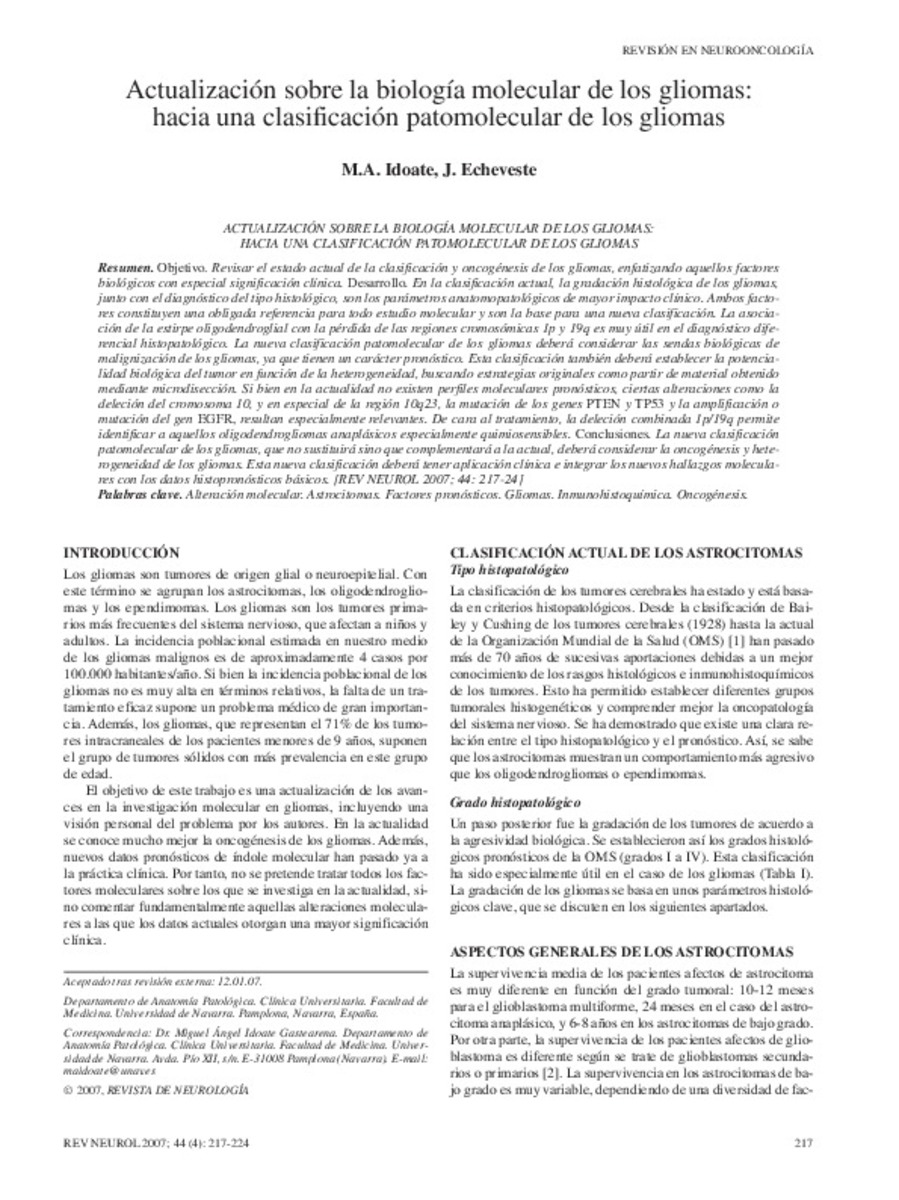Actualización sobre la biología molecular de los gliomas: hacia una clasificación patomolecular de los gliomas
Keywords:
Brain Neoplasms/classification/genetics/pathology/therapy
Glioma/classification/genetics/pathology/therapy
Tumor Markers, Biological
Publisher:
Viguera Editores
Citation:
Idoate MA, Echeveste J. Actualización sobre la biología molecular de los gliomas: hacia una clasificación patomolecular de los gliomas. Rev Neurol 2007 Feb 16-28;44(4):217-224.
Statistics and impact
0 citas en

0 citas en

Items in Dadun are protected by copyright, with all rights reserved, unless otherwise indicated.







